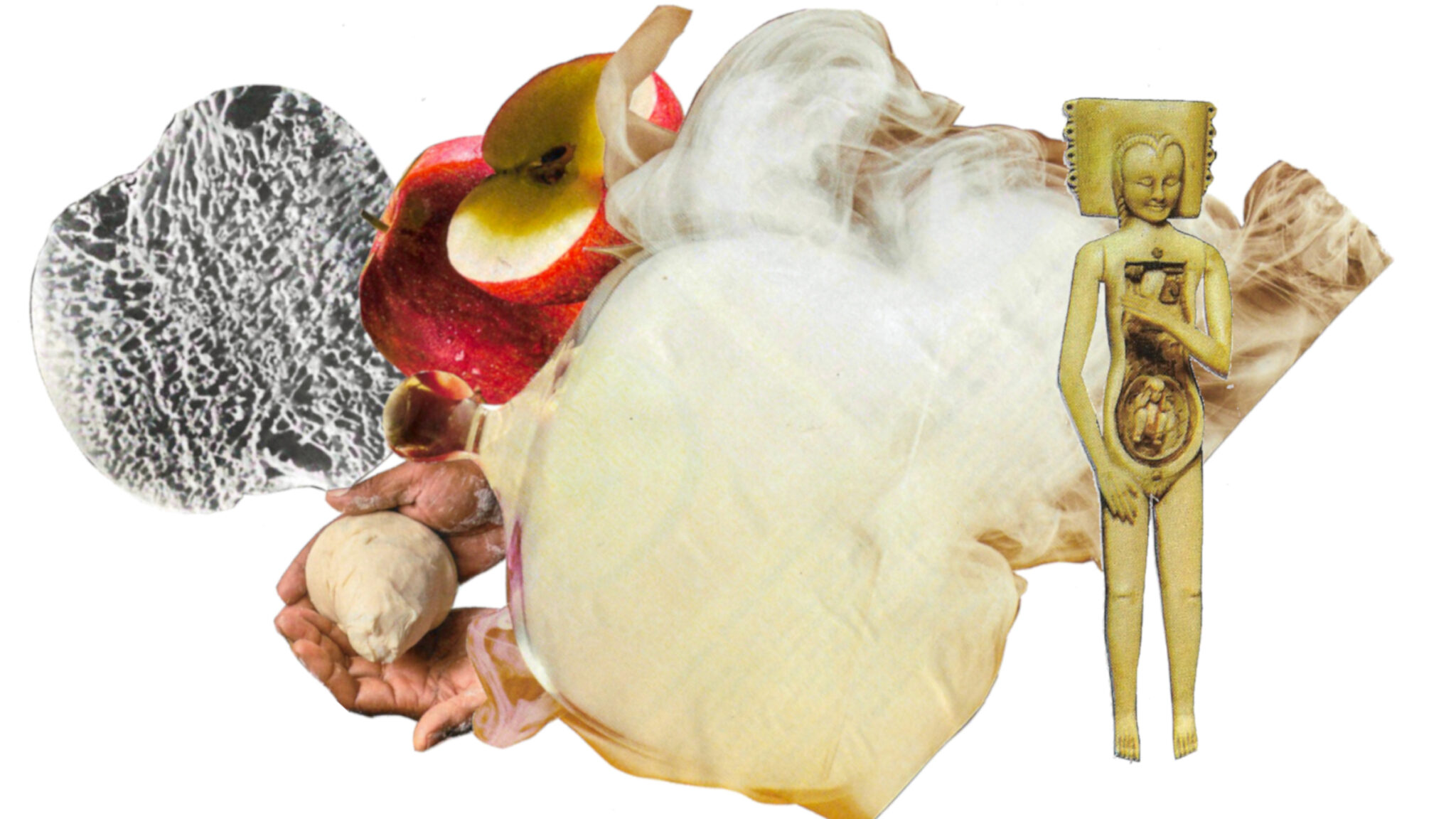

Illustrator: Cyrus Finegan
While breast cancer experts are anything but clear on what the words “dense breasts” signify in the clinic, or for that matter, in the English language, FDA appears to be less perplexed.
As of Sept. 10, the agency that sets the standards for the quality of the millions of mammograms performed in the U.S. requires radiologists to tell women whether their breasts are “dense” or “not dense.”
The “patient lay summary” FDA now requires to be included in every mammography report reads:
Breast tissue can be either dense or not dense. Dense tissue makes it harder to find breast cancer on a mammogram and also raises the risk of developing breast cancer. Your breast tissue is dense [or your breast tissue is not dense]. In some people with dense tissue, other imaging tests in addition to a mammogram may help find cancers. Talk to your healthcare provider about breast density, risks for breast cancer, and your individual situation.
Experts in screening say that images can vary wildly, depending on the equipment used, the angle of the breasts as they are compressed into the machines, and the reader’s interpretation. Once the patients are given the “dense” or “not dense” classification, there are no evidence-based guidelines for follow-up. Also, screening experts note that a patient given the “dense” classification is thrust into a world of contradiction and ambiguity. Conversely, a patient given the “not dense” classification is lulled into what may be false complacency.
Mammography, the gold standard for breast cancer screening, has a long history of controversy, from the decades-long imbroglio over the age when population-based screening should begin to the effectiveness of mammography vans (The Cancer Letter, May 12, 2023). The mammogram’s imperfections and ambiguities often result in false positives, overdiagnosis, and overtreatment.
And for those with dense breasts, whatever that means, the information void is even more profound:
- Typically, younger women have dense breasts and older women have less dense breasts, said Otis Brawley, the Bloomberg Distinguished Professor of Oncology and Epidemiology at Johns Hopkins University and former chief medical and scientific officer and executive vice president of the American Cancer Society. “When doing a mammogram on a 20-year-old, one will see a breast which is entirely white, so one is looking for a white tumor on a white background. When doing a mammogram on a 70-year-old, that breast will appear black and the tumor white. And the aging of the female breast mammographically is just 50 shades of gray,”Brawley said.
- The notification unaccompanied by interpretation will trigger anxieties without improving outcomes, said Michelle Tregear, chief programs officer of the National Breast Cancer Coalition. “You’re telling patients they have an increased risk of being diagnosed with breast cancer, but we have no evidence whether or not additional screening is going to benefit them,” Tregear said.
- The notification sets off a cascade of improvised followup,said Stacy Wentworth, a radiation oncologist and clinical associate at Duke University School of Medicine. “It guides [the patients] to seek information from their primary care physicians, nurse practitioners, or physician assistants—who are not oncologists and who are not radiologists—who do not have the information to counsel these patients about what to do with that information,” Wentworth said.
- The information here is running ahead of the evidence, which will ultimately lead to overdiagnosis, said Steven Woloshin, co-director of the Center for Medicine and Media at the Dartmouth Institute. “This is an example of where the guidance is way ahead of the data,” Woloshin said. “The practical consequence of reporting breast density will be more screening. Unfortunately, there is no evidence that this will do more good than harm.”
- Finally, an uptick in demand in follow-up procedures can create a health equity issue, as those women who are at higher risk for breast cancer and breast cancer mortality are more likely to be living in poverty and lack access to quality health care, Brawley said. “The line gets longer for the high-risk patients who do need supplemental testing,” Brawley said.
The new FDA rule was ushered in by advocacy groups that pushed for it for over a decade. Insiders say the campaign was led by DenseBreast-info.org, or DBI, a website that has galvanized a small community of advocates and researchers, who initiated and pushed for this FDA rule.
The FDA rule doesn’t go far enough, Wendie Berg, professor of radiology at University of Pittsburgh School of Medicine, and chief scientific advisor, at DenseBreast-info.org said to The Cancer Letter.
You’re telling patients they have an increased risk of being diagnosed with breast cancer, but we have no evidence whether or not additional screening is going to benefit them.
Stacy Wentworth
The rule requires giving women the binary dense/not dense classification, but stops short of requiring that a more specific classification–one of four gradations of density–be included in the patient charts.
“Though the specific density category is now required to be included in the medical record report to the referring provider, the patient will not receive that information in her letter,” Berg said. “There is already substantial proof of need and benefit to additional screening in women with extremely dense breasts, so women with dense breasts may want to know the specific category. The notification also does not address combinations of risk factors.”
Said Berg:
While mammography is far from a perfect test, it is the only test studied and shown to reduce deaths due to breast cancer.
While it is important to continue to have mammograms, there are additional available options that can improve cancer detection in women with dense breasts. MRI will detect the most cancers, but not all women want to have contrast injection or can tolerate an MRI due to claustrophobia.
We need to push for additional options such as contrast-enhanced mammography and encourage adaptive guidelines that update more frequently as new data become available.
While there is certainly need for additional validation of supplemental screening for breast cancer, there is already evidence of reduced interval (symptomatic) cancer rates and reduced advanced stage disease, when screening MRI is added to mammography in women with dense breasts.
For the colorectal cancer guideline, the [U.S. Preventive Services Task Force] recognizes that, if a given test reduces mortality through early detection, other methods that improve early cancer detection even more than the initially validated test should be recommended.
MRI finds more biologically important cancers than does mammography, so concerns about overdiagnosis are largely unfounded.
JoAnn Pushkin, co-founder of DBI, initiated the request to FDA to consider inclusion of breast density information in the patient letter.
In 2011, Pushkin testified at a meeting of the FDA National Mammography Quality Assurance Advisory Committee.
At that meeting, FDA’s advisors reached consensus that all women should indeed be informed of their mammographic breast density, said DBI scientific advisor Berg.
In 2019, when the FDA proposal was put out for comment, the National Breast Cancer Coalition urged the agency not to implement it. In the absence of evidence-based guidelines for followup, the agency’s decision to elevate this single risk factor over others would cause pointless worry, lead to overdiagnosis and overtreatment, and increase the cost of care.
“This is simply unacceptable absent solid evidence of benefit in patient-relevant survival outcomes,”NBCC said in its comments submitted to FDA. “It may benefit the medical imaging community and oncologists, but not women in general.”
But advocacy in favor of the rule won out, and in March 2023, FDA published a final rule to update mammography regulations that were issued under the Mammography Quality Standards Act of 1992 and the Federal Food, Drug, and Cosmetic Act, giving facilities 18 months to comply with the rule.
Rep. Rosa DeLauro (D-CT), who at one point considered co-sponsoring a bill to mandate reporting of breast density, applauded FDA’s recent action.
“Early detection is key, which is why I am proud that the FDA has finalized its Mammography Quality Standards Act rule. Women will be notified of whether they have dense breasts and the additional screenings that may be required to detect breast cancer,” DeLauro said in a statement.
The updates also include amendments to strengthen the FDA’s oversight and enforcement of facilities and help categorize and interpret mammograms (The Cancer Letter, March 10, 2023).
The science is not clear
Nearly half of all U.S. women age 40 and older are categorized as having dense breasts, according to a paper by Brian L. Sprague et al., published in the Journal of the National Cancer Institute.
Most U.S.-based physicians use the American College of Radiology Breast Imaging-Reporting and Data System, BI-RADS, scoring system, visually classifying density into four groups: fatty, scattered tissue, heterogeneously dense, or extremely dense.
Having dense breasts modestly increases breast cancer risk, according to a 2006 paper by Valerie A. McCormack and Isabel dos Santos Silva, published in Cancer, Epidemiology, Biomarkers, and Prevention,though the reason for this is uncertain.


Illustrator: Cyrus Finegan
The dense tissue also makes it more difficult to visualize tumors during screenings, as both dense breast tissues and cancer can look similar on a mammogram, and the denser tissue can obscure smaller tumors. However, epidemiology experts note that while breast density may increase cancer risk, there is no evidence to suggest that breast density plays a role in causation of breast cancer or that it increases a woman’s risk of dying of breast cancer.
A study by Gretchen L. Gierach et al. published in 2012 in Journal of the National Cancer Institute attempted to answer this question using data from the Breast Cancer Surveillance Consortium. The researchers concluded that high mammographic breast density is not associated with increased risk of death from breast cancer or death from any cause after accounting for other patient and tumor characteristics.
Many women hear that mammographically dense breasts are more likely to get breast cancer, and they think that means they’re more likely to die from breast cancer, Dartmouth’s Wolosin said to The Cancer Letter. “We need to be careful—because there really isn’t evidence that there’s increased mortality.”
Woloshin, Brawley, and others say that concerns over subjectivity of readings, overdiagnosis and false positives are anything but “unfounded.”
“How dense the breast is, is in the eye of the mammographer,” Brawley said. “Density varies so much depending on the equipment being used, the angle that the radiation tech puts the breast into the mammogram machine—there are so many issues here.”
“It’s a political thing rather than a medical thing,” said Brawley.
Brawley said he worries about radiation from frequent unnecessary screenings.
“Let’s not forget that 1.5% of the 1.6 million cancers that will be diagnosed this year will have been caused by medical radiation,” he said. “Abnormal mammograms are more likely in your 40s, because they’re harder to visualize,” he said. “How many breast cancers are we causing with all this screen-‘em-early-and-screen-‘em-often? It’s a self-fulfilling prophecy.”
Some forms of germline mutations, including the BRCA mutation, also make patients more vulnerable to those exposures, experts say. These mutations are very rare, but for the increased number of women with breast density seeking additional screenings, those risks also increase.
Gadolinium-based contrast agents required for breast MRI have also been associated with nephrogenic systemic fibrosis in patients with acute kidney injury or chronic kidney disease, and more recent research has shown that IV gadolinium exposure may be associated with neuronal tissue deposition, even in patients with normal renal function, according to a study published in The Texas Heart Institute Journal.
Another of Brawley’s concerns is overdiagnosis, especially of atypias and ductal carcinoma in situ (DCIS), and false positives, the latter of which half of all women experience over 10 years of mammograms, according to a study by Thao-Quyen H. Ho et al., published inJAMA Network Open.
Said Brawley:
DCIS is, at worst, a precancerous condition. And that, in some instances, is in itself just an abnormal pathology that will never affect the woman’s health—unless we diagnose it.
The question is, is it genomically programmed to grow, spread, and kill?
Curing cancer that doesn’t need to be cured is a great business.
Ever since we were at our mother’s knee, we were told cancer is bad, and the way to deal with cancer is to cut it out. No one believes overdiagnosis exists.
TMIST, the largest clinical trial involving women at NCI, is looking at this issue—that’s how much of a problem overdiagnosis is. (The Cancer Letter, March 25, 2022; March 19, 2021; Sept. 11, 2020; July 12, May 24, March 15, 2019).
While the benefit of the new FDA rule is questionable, there’s no question about the potential for harm, said Woloshin.
“The more screening that you do, whether it’s any of those modalities, increases the chance of false alarms, including ones that are scary enough to require biopsy,” said Woloshin. “And it increases the risk of overdiagnosis, which means finding and treating cancers that weren’t destined to cause harm.”
These concerns are echoed by the U.S. Preventive Services Task Force and professional organizations including the American College of Obstetricians and Gynecologists.
Neither recommend supplemental screening for women with dense breasts who don’t have any symptoms or risk factors for breast cancer, citing false positives and lack of meaningful improvements in cancer outcomes associated with supplemental screening.
False positives, which are more likely to occur in younger women, and even more likely in younger women with dense breasts, discourage some women from returning for future mammograms according to a study by Diana L. Miglioretti et al. and published in theAnnals of Internal Medicineearlier this year.
“We literally have women in their forties—who, after the third or fourth mammogram has been consecutively called ‘abnormal’ requiring further assessment—they get so frustrated with mammography, they say, ‘To hell with it,’ and they walk away from mammography in their forties and never get it in their fifties and sixties, when it’s clearly a better test,” said Brawley.
These extra screenings may detect a small number of cancers missed by mammography, while dramatically increasing the number of false positives—and leading to more procedures including unnecessary biopsies and their associated risks.
“We shouldn’t be applying interventions that have not demonstrated efficacy, especially at this level, when it can impact so many individuals,” said Tregear. “So, we need to be generating the evidence.”
“Mammography screening in and of itself is a big industry,” said Tregear. “[The FDA rule] is going to monetarily benefit the industries that provide these services. But what benefit does it bring to the general public and women?”
Mammography is especially good at finding less aggressive, slow-growing, and in some cases, completely indolent tumors that would never have caused harm to begin with, “and I don’t think people recognize that,” she said.
What should the emphasis be on?
Physicians have no idea what to do with the dense/not dense dichotomy.
Said Wentworth:
Just ordering another test—like a fast MRI or a contrast-enhanced ultrasound—may be the correct test, but they also may not be.
What oncologists learned about MRIs in the mid- to late-2000s was that while they were providing more information, there was no way to know what the doctors were actually seeing.
And that was leading to more cost. It was leading to more biopsies, and it contributed to the trend of more mastectomies, because in the face of uncertainty, sometimes women will make a drastic choice of surgery, because they don’t want to take the chance that there’s undiagnosed cancer in their breast.
We should not have to treat anxiety with mastectomies. We are advanced enough in our science that we should be able to provide a better answer for women than just what we were doing in the 70s.
The emphasis should instead be placed on more accurate and specific screening for women who are at high risk for breast cancer. NCI funding disproportionately goes towards breast cancer treatment, not prevention and different screening tools.
We have the opportunity to implement risk-based screening and help make women feel comfortable with that. Breast density is just one of those risks. That will require enough evidence that women feel comfortable in giving up the current protocol.
It was so difficult to get women to start doing annual mammograms. You don’t just want to throw the baby out with the bath water.
I think it would be more helpful if we pressured lawmakers to fund prevention research and more specific screening tools than mammograms or imaging tests. Because what we really want is to prevent breast cancer from forming or to find it earlier.
And so, even finding it on a mammogram—dense breasts or not—you’re still finding it when there’s billions and billions of cells already.
I think we need to be looking at some of the more multi-cancer assay screening tools instead of sort of stuck with mammograms.
We’re still screening too many low-risk women, tens of thousands of low-risk women, to find one breast cancer. That’s just not efficient. And it’s not sustainable.
Meanwhile, disparities are exacerbated
“Resources are scarce in the U.S., despite what people say,” said Brawley.
As a result, the high-risk people who are least likely to get a necessary test when resources are low are those in underrepresented demographics and underprivileged areas.
“Somebody who needs an ultrasound, who needs an MRI of the breast, by current criteria, is not going to get it. In the United States, we very frequently start recommending these tests, not realizing that we don’t have enough equipment or doctors to do these tests,” said Brawley. “You start making the line longer for people who need that technology. And the people who don’t get that needed technology are usually poor folks and minority folks.”
Not only will the screenings become limited for high-risk people living in poverty, but the quality of mammograms will decrease, especially for the dense breast population, said Brawley. In many healthcare deserts in the U.S. mammograms are performed in mobile mammography units.
“I hate mammogram vans,” said Brawley. “This is where the density issues will be even more of an issue.”
Mammographers on vans rarely look at patients’ previous mammograms, and without that history the mammogram interpretation is lower quality, Brawley said.
This notification puts alarm ahead of the data, and will lead to unnecessary supplemental testing, false positives, and further unnecessary interventions, critics say. It provides vague information to half of the women 40 and older who have a mammogram.
The more specific information of the breast density category is provided only for the physician, who also lacks evidence-based data for what to do with it. Instead, advocates should be emphasizing better screening tools that consider integral risk factors that may actually impact breast cancer mortality rates and overall quality of life.
“Screening mammography, which started with the HIP and Malmo studies 50 years ago, was an important step forward, but with the current state of science, women deserve better,” said Wentworth. “Rather than focusing on breast density, women could be asking ‘Where is our molecular biomarker?’ In the 21st century, breast cancer screening should be moving towards an earlier and risk-based approach. Now is the time.”










